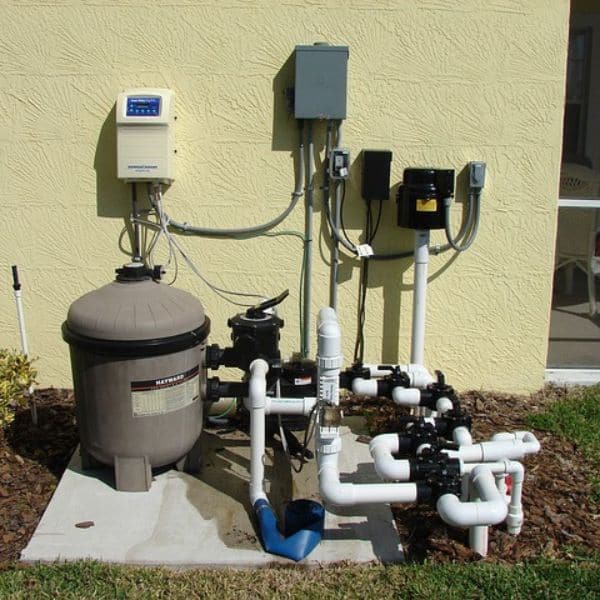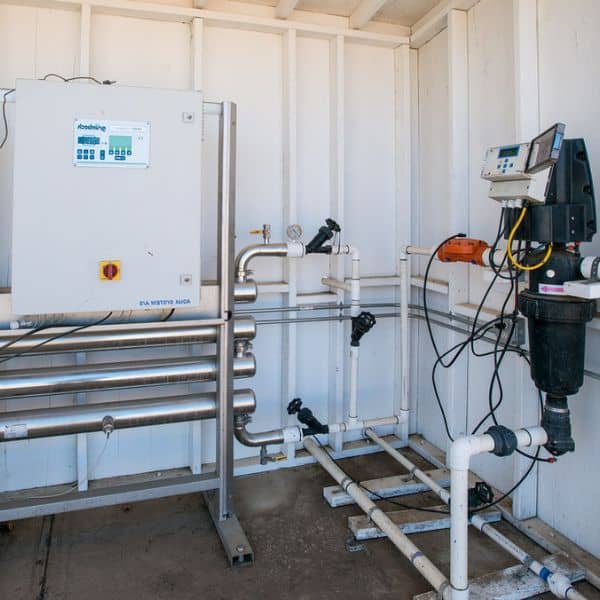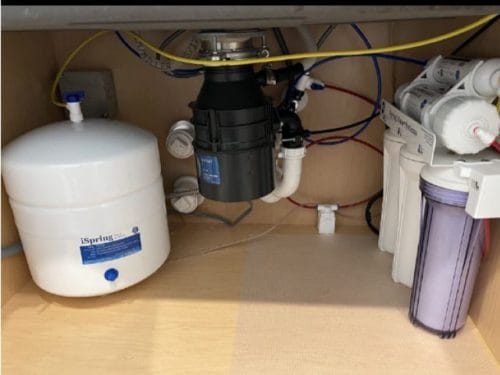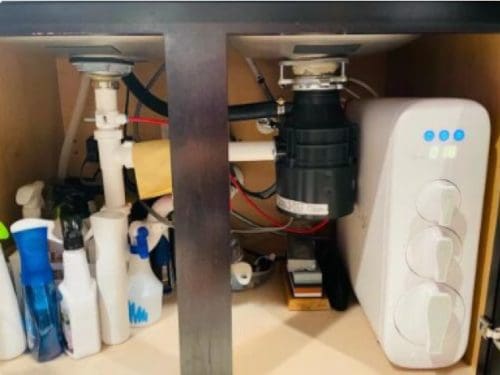What Is Reverse Osmosis Waste Water?
Reverse osmosis (RO) is a water purification technology that uses a semi-permeable membrane to remove contaminants larger than water molecules. The RO membrane effectively filters chemical contaminants and microorganisms such as bacteria and viruses.

Most reverse osmosis systems have prefilters such as a sediment filter or activated filter to remove sediments and other contaminants. The most crucial component is the RO membrane which removes almost anything in the source water.
For RO to work, it has to send all the impurities down the drain as rejected water or wastewater. Inside the system, your tap water is split up into two parts. One part conveys clean pure water molecules. The other part contains all the contaminants and unwanted substances from the tap water. Contaminants bigger than the 0.0001-micron size cannot pass the semi-permeable RO membrane and are trapped thus constituting the brine.
The clean water goes to the storage tank while the wastewater or brine is thrown out of the system flushing out the contaminants. The discarded water that contains all the impurities is called reverse osmosis waste water or brine.
Why Does Reverse Osmosis Waste Water – Reasons Explained
As explained above, Reverse Osmosis APEC vs. iSpring is a process used to purify or desalinate water. It involves passing water through a semipermeable membrane that traps impurities and then collecting clean and usable water. But why does this process result in a significant amount of wastewater?
During the process, the semi-permeable membrane has to be free from sediment buildup and other impurities that can slow down the process. To achieve this, additional water is used to wash away those impurities and is sent to the drain. This process results in more waste water than filtered water.
How Much Water Does Reverse Osmosis Waste?
Reverse osmosis is an effective way of treating contaminated water, making it safe for drinking and other uses. But how much water is wasted through the reverse osmosis process? The answer varies depending on the type of system used, the number of contaminants available, and the number of dissolved solids in the source water.
Conventional reverse osmosis systems give you 1 gallon of pure water with 4 gallons of water wasted —a waste water ratio of 1:4. Low-grade RO systems could even waste 8 gallons of water.

This could mean approximately 25% of the water gets filtered while 75% is wasted during the process. That adds up to quite a bit of wasted water when you factor in all households and businesses that use reverse osmosis systems regularly for their drinking supply.
Thankfully, water filter manufacturers have developed methods to minimize the amount of wastewater. We see companies with improved RO waste water ratios of 1:2, 1:1, and even 2:1—2 gallons of clean water for every gallon of wastewater.
How Can You Minimize Waste Water In An Reverse Osmosis System?
The best countertop RO systems are used to purify water, but can also produce a certain amount of wastewater. Fortunately, there are a few steps that you can take to minimize the amount of waste being disposed of at the end of each cycle.
Reverse Osmosis System Should Be Properly Maintained
First and foremost, make sure your reverse osmosis system is properly maintained. Replace all filters and membranes on schedule so that the system operates as efficiently as possible and produces minimal waste.
Maintain the right water pressure level
The ideal water pressure level for most RO systems is between 35-40 psi. Lowering the pressure would only produce more wastewater. So, check your pressure valve and maintain an adequate pressure level as recommended.
Invest In a Permeate Pump or flow restrictor
Consider investing in a permeate pump to improve the efficiency of your reverse osmosis system. This device could help you save 80% of the water that is supposed to go down the drain. Other benefits include increased water production, prolonged system life, and much cleaner water.
Flow restrictors also reduce the amount of brine or wastewater the RO system produces. They do this by preventing the pressure inside the RO membrane to drop too low.
Look For Ways TO Repurpose Your Waste Water
Finally, look for ways to reuse or repurpose your wastewater depending on its quality after being processed by the reverse osmosis system. For example, you can use wastewater for cleaning or watering your garden. If you’re dealing with saltier water, you may choose to dilute it further or use it for flushing toilets.

What To Do With Reverse Osmosis Discharge Water?
RO systems produce two types of waste streams: the concentrate that contains all the contaminants rejected by the membrane and permeate water that is usually used for household purposes. So what can you do with all that reverse osmosis waste water?
Depending on the nature and concentration levels of these contaminants, there are several different options for disposal or reuse available.
- The first option is to simply discharge it into your wastewater system. This may be necessary if there are no other options available, although it has some negative environmental impacts.
- Alternatively, you could use it to water your garden only dilute it with tap water as high TDS can deplete soil fertility
- Additionally, you can reuse the concentrate in various applications such as cleaning products or even greywater reuse systems.
How To Use Reverse Osmosis Systems For Waste Water Treatment?
Reverse osmosis systems use pressure to remove contaminants from water, making it safe to drink. The process is simple and cost-effective, making it a popular option for those looking to treat their own wastewater. Reverse osmosis systems work by forcing water through a semi-permeable membrane which traps unwanted particles like bacteria, viruses, salt, and other pollutants.
The process leaves behind clean and safe water that can be reused for drinking or other purposes. In addition to being an efficient way to treat wastewater, reverse osmosis systems require minimal maintenance and are relatively inexpensive.
To use a reverse osmosis system for wastewater treatment you will need to install the unit in the home or business where the wastewater originates from. The RO wastewater unit will need to be connected to the water source and then the wastewater will pass through the unit, where it is purified by the process of reverse osmosis.
The contaminants are trapped in RO filters and then sent to the drain. After the water has been purified by reverse osmosis it can be used for any purpose, whether it is for drinking or watering plants.
Benefits Of Using Reverse Osmosis Systems
Reverse osmosis systems are an effective and reliable way to treat wastewater. This process is used in many industries, such as food production, chemical manufacturing, and power generation. It is also becoming increasingly popular for residential applications due to its numerous advantages.
- The main benefits of using reverse osmosis filters for wastewater treatment are that they remove dissolved salts and other impurities from the water. This results in clean water with no contaminants, making it safe for reuse or discharge into the environment.
- Additionally, reverse osmosis systems require minimal energy consumption compared to conventional methods of water treatment such as filtration or distillation.
- Reverse osmosis systems can also be easily scaled up or down depending on your needs.
- Furthermore, they also produce high-quality effluent that meets all environmental standards for waste disposal requirements.
The Bottom Line
Reverse Osmosis (RO) is a reliable method to produce pure and safe water. It involves pushing the water through a semi-permeable under pressure and sending the waste water with the rejected contaminants down the drain. While reverse osmosis wastes water, you can repurpose the discharge water for cleaning purposes or watering your garden.

